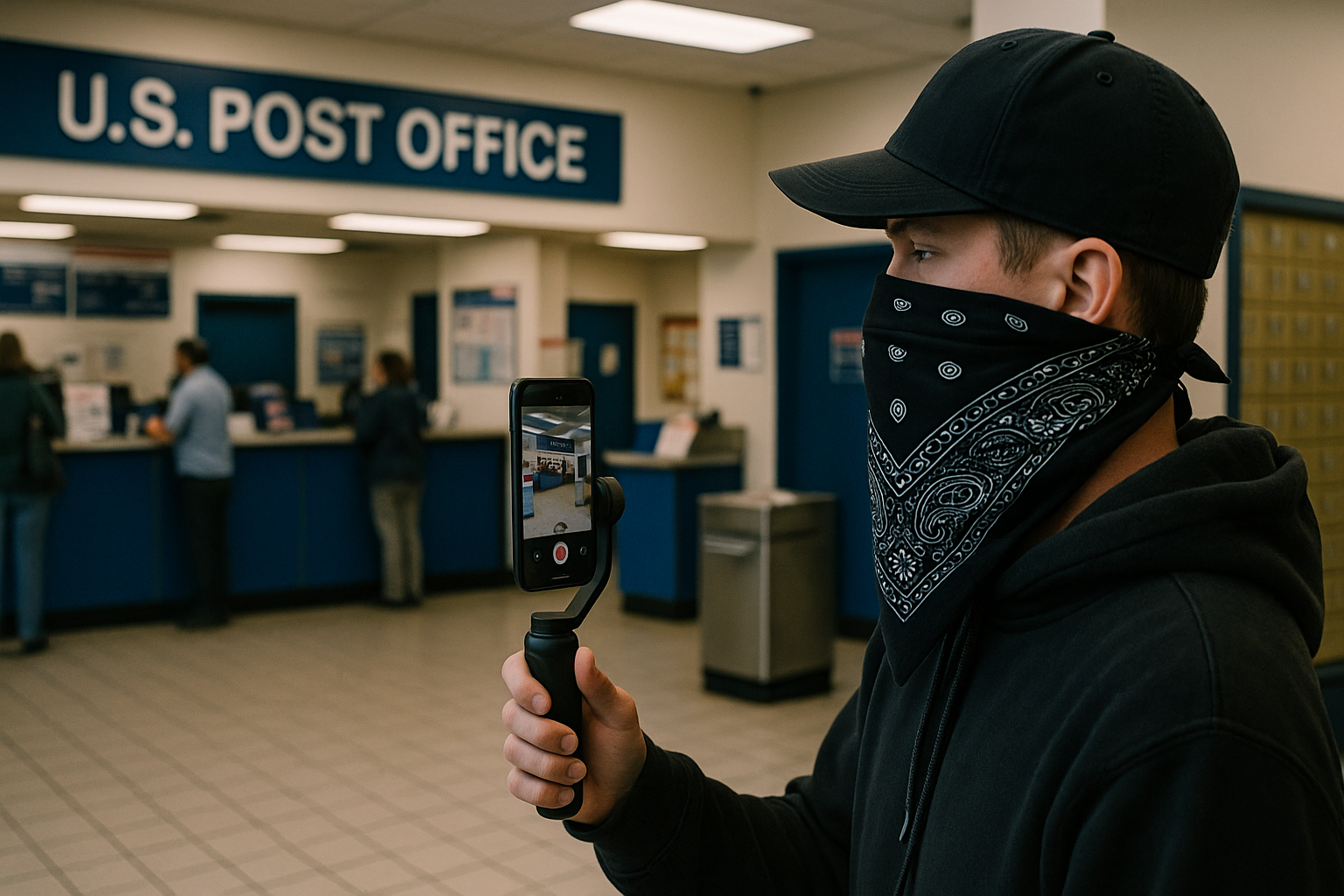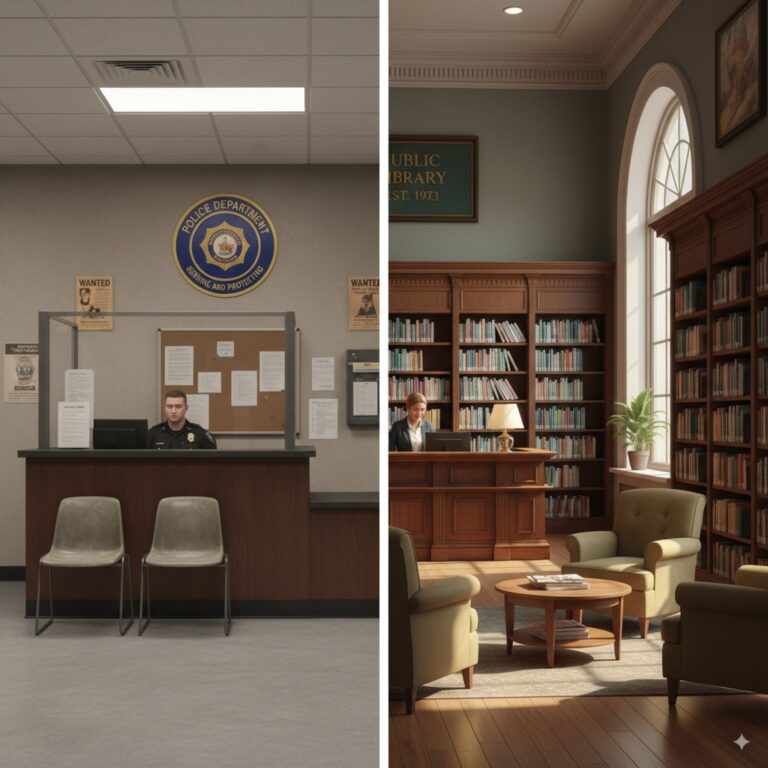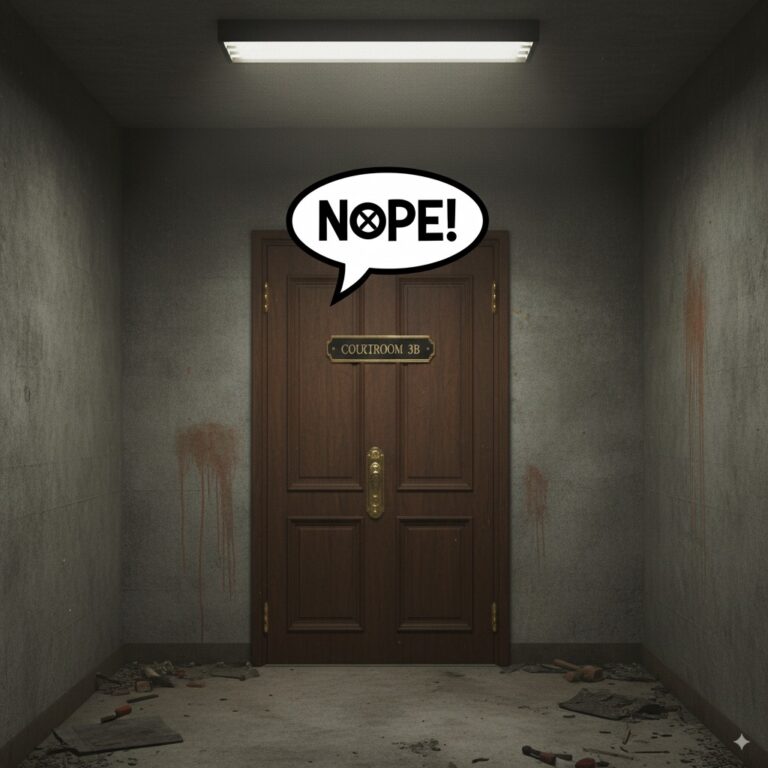FAQ: Can You film in a Post Office?
Filming in a U.S. Post Office: Legal Boundaries and Practical Guidance
Introduction
Can you film in a Post Office? Questions about filming inside a post office often arise in the context of First Amendment audits and citizen journalism. U.S. postal lobbies occupy an unusual space: they are government‑controlled but operate primarily as a place of business. Understanding what is permitted requires looking at federal regulations and internal Postal Service policies. This post explains those rules, clarifies when permission is required, and offers practical tips to avoid conflict when photographing or recording in postal facilities.
Federal Regulations Governing Photography
Two federal regulations set the broad parameters for photography on postal premises and federal property.
- 39 CFR § 232.1(i), the postal conduct regulation, states that photography for news purposes is permitted in entrances, lobbies, foyers, corridors and auditoriums when used for public meetings, unless security personnel or posted signs prohibit it[1]. The same section notes that other photographs may only be taken with the permission of the local postmaster or installation head[1]. This language makes clear that casual or personal snapshots are not an unconditional right; they may be controlled to protect operations, privacy and security.
- 41 CFR § 102‑74.420, part of the Federal Management Regulation, applies broadly to federal buildings and informs Postal Service policy. It states that, barring conflicting security rules or court orders, individuals on federal property may take photographs of:
- Space occupied by a tenant agency for non‑commercial purposes only with the permission of the occupying agency[2];
- Space occupied by a tenant agency for commercial purposes only with written permission from an authorized official[2];
- Building entrances, lobbies, foyers, corridors and auditoriums for news purposes without prior permission[2].
These regulations show that the right to record is not absolute. News gathering enjoys some deference, but other forms of recording—especially commercial or professional—require authorization.
USPS Policy and Poster 7
The Postal Service supplements the federal regulations with internal policies. Poster 7: Rules and Regulations Governing Conduct on Postal Service Property is typically displayed in post offices. It incorporates the CFR language and stresses that news photography is generally allowed in public areas; however, other types of recording need the local postmaster’s approval[3].
A 2008 Postal Bulletin article, still referenced in current online policy, provides further guidance:
- Personal snapshots — The Postal Service allows informal photographs from handheld cameras for personal use at the postmaster’s discretion, provided they are taken in publicly accessible areas and do not disrupt operations[4]. No special permission is required, but photographs must not capture postal employees, customers, surveillance equipment or the exterior of mail pieces (which reveal private addresses)[4]. If a postmaster believes the activity is disruptive or presents security concerns, they may prohibit all photography[4].
- News media requests — Journalists seeking to film or photograph for news stories are instructed to contact the local Public Affairs and Communications representative. These requests are coordinated through the Postal Service’s media relations channels[5].
- Professional or commercial projects — Individuals intending to use professional equipment, set up lighting or tripods, film in non‑public areas, or capture images for advertising must request authorization through the Office of Rights and Permissions. This process involves a formal license or location agreement and may require at least two weeks’ notice[6]. Examples include documentaries, student films, and high‑resolution photography[7].
These policies emphasize the distinction between casual personal use and professional or commercial filming. They also confirm that postmasters retain authority to restrict photography when it interferes with operations or threatens privacy or security.
The Role of Postmasters and Security Personnel
Federal law gives postmasters considerable discretion. When the U.S. Supreme Court examined the postal conduct rules in United States v. Kokinda, the Court acknowledged that local postmasters must balance the public’s right to document news against operational needs. The decision noted that while news photography is generally allowed in public areas, other photographs may be taken only with permission from the local postmaster or installation head[3]. The Court’s analysis further recognized postal property as a nonpublic forum, meaning restrictions need only be reasonable and not discriminate by viewpoint.
Practically, this discretion means that security personnel or postal employees can lawfully ask individuals to stop filming if it disrupts transactions, impedes foot traffic, or captures sensitive information. Posted signs prohibiting photography or verbal orders from authorized personnel must be followed. Refusal to comply can lead to removal from the property, fines, or charges under federal law.[1] describes penalties of fines or imprisonment for violations.
Practical Tips for Filming at a Post Office
If you intend to photograph or record inside a U.S. post office, consider these guidelines:
- Stay in publicly accessible areas. Lobbies, foyers and corridors are typically open to the public. Do not enter behind‑the‑counter spaces, employee‑only areas or secured mail rooms without permission.
- Limit your scope to newsworthy activity. Federal rules explicitly allow news photography in entrance and lobby areas[1]. If your purpose is personal or commercial (e.g., product shoots, advertising), seek written authorization from the postmaster or the Office of Rights and Permissions[6].
- Respect privacy. Avoid filming employees or customers without their consent. Do not record mail labels or addresses; the Postal Service forbids capturing the “cover of mail” for privacy reasons[4].
- Use minimal equipment. Handheld cameras or phones are less likely to be seen as disruptive. Tripods, lighting, or extensive gear usually require prior approval[7].
- Follow posted signs and instructions. Some facilities may post signage prohibiting photography or have heightened security measures. Security officers can override general rules if circumstances warrant[2].
- Notify the postmaster for professional projects. If you plan a documentary, commercial shoot or student film, contact the postmaster and begin the licensing process early. The Postal Service typically asks for at least two weeks’ notice[8].
- Be prepared to leave if asked. Even if you believe the rules allow filming, refusing to comply with a lawful order can result in removal or penalties. Save your argument for a formal complaint rather than an on‑scene confrontation.
Final Thoughts
Filming inside a U.S. post office is not categorically forbidden. Federal regulations permit news photography in lobbies and other public areas[1], and the Postal Service allows casual snapshots that do not disrupt operations[4]. However, those freedoms come with conditions: permission is required for non‑news or commercial filming, equipment setups are restricted, and the local postmaster retains the right to halt any recording that interferes with business or jeopardizes security[2]. Understanding these boundaries—and respecting the people who work and do business at the post office—will help ensure that your visit stays on the right side of the law.
[1] eCFR :: 39 CFR 232.1 — Conduct on postal property.
https://www.ecfr.gov/current/title-39/chapter-I/subchapter-D/part-232/section-232.1
[2] eCFR :: 41 CFR 102-74.420 — What is the policy concerning photographs for news, advertising or commercial purposes? (FMR 102-74.420)
[3] United States v. Kokinda, 497 U.S. 720 (1990)
https://www.law.cornell.edu/supct/html/88-2031.ZD.html
[4] [5] [6] [7] [8] Requests for Filming and Still Photography on Postal Service Premises
https://about.usps.com/postal-bulletin/2008/html/pb22228/html/info_005.html



